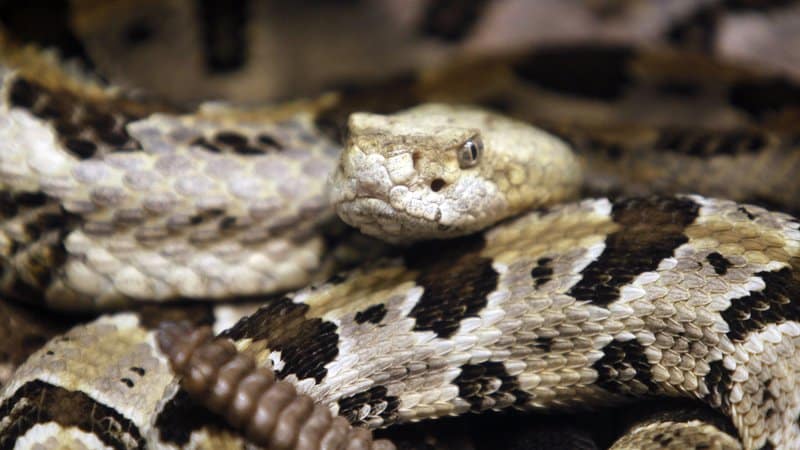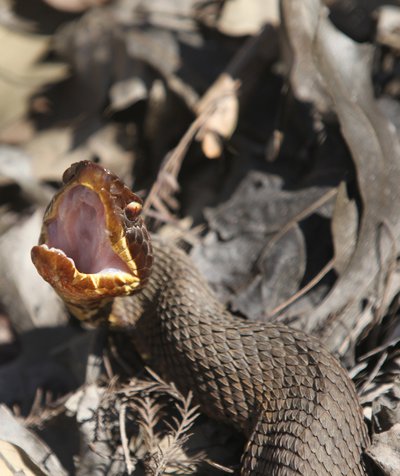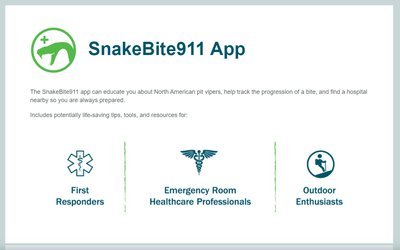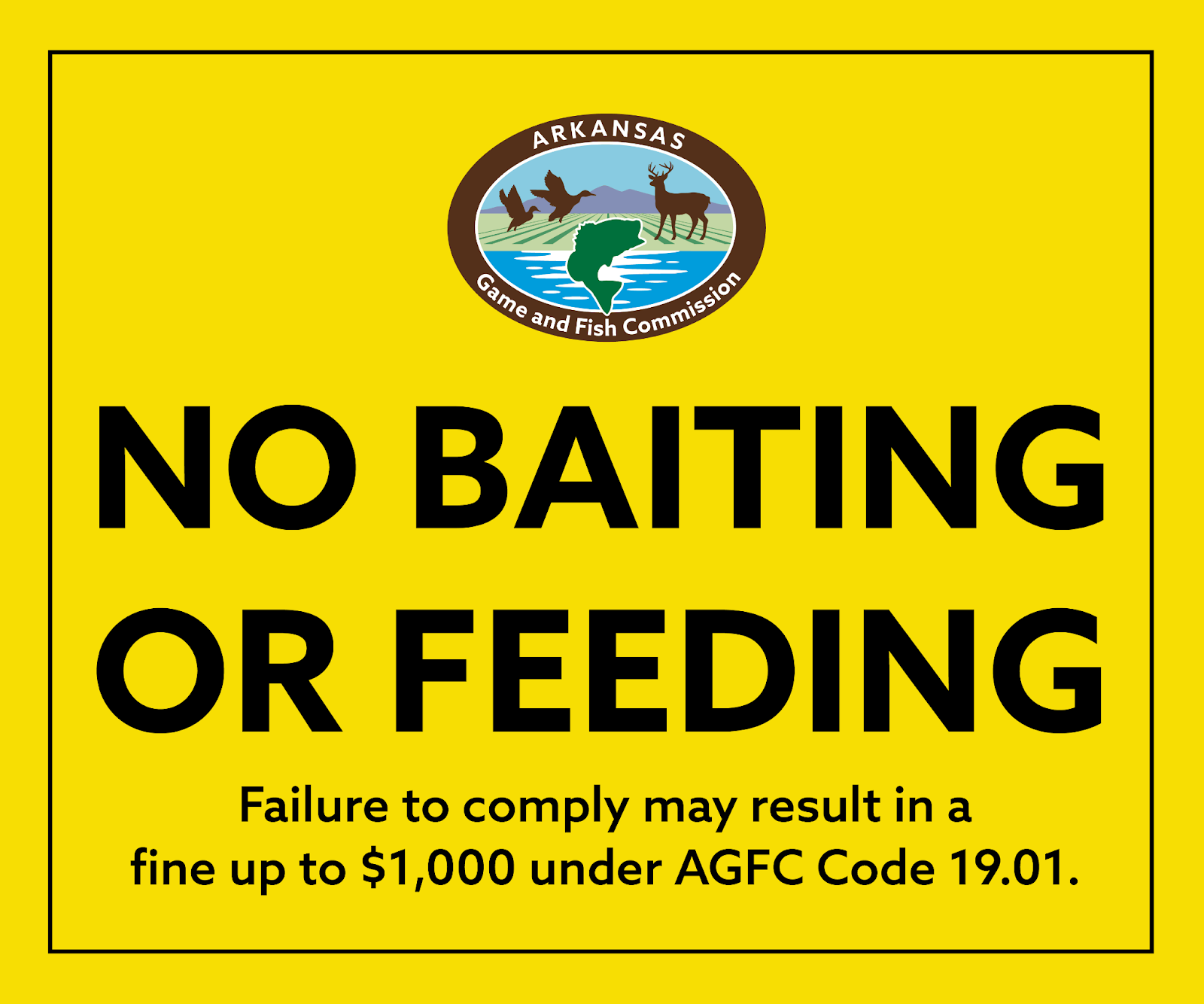Thwart a snakebite before it happens
ON 08-11-2021

Aug. 11, 2021
Randy Zellers
Assistant Chief of Communications
LITTLE ROCK — The Centers for Disease Control and Prevention estimate between 7,000 and 8,000 people are bitten by venomous snakes in the United States each year. Thanks to modern medicine, only about five of those victims die from their snakebite. By comparison, an average of 41 people in the U.S. die annually from lightning strikes.
Odds aside, preventing injury from Arkansas’s venomous reptiles is as simple as learning to identify them and avoid them should you come across one in the wild. According to Lori Monday, regional educator for the Arkansas Game and Fish Commission, only six of Arkansas’s native snake species are venomous, and each can be identified with a little practice.
“Many people will point out that a nonvenomous snake will have round pupils where a venomous snake has elliptical pupils like a cat’s eyes, but that can be dangerous and misleading,” Monday said. “Coral snakes are venomous and have round pupils, and if you’re close enough to tell the snake’s pupil shape, you’re probably not at a safe distance.”
Identifying a venomous snake by a triangular head also can be misleading, as the eastern hog-nosed snake and some nonvenomous water snakes can flatten their heads to look triangle-shaped as well.
“It’s easier and safer to just learn a few key identifiers that will help you judge if it’s a venomous snake or not,” Monday said.
The eastern copperhead has one of the best camouflage patterns in the fall woods, with hourglass bars that alternate between dark and light coppery brown. The distinct hourglass may not be easily noticed unless you are looking at them from above. Instead, Monday says look for the “Hershey’s kiss” shape on the side of the snake that’s formed by half of that hourglass.

“Northern cottonmouths are probably the hardest of Arknasas’s venomous snakes to identify because the juveniles are lighter colored and have distinct barring, while the adults will be very dark,” Monday said. “But the cottonmouth has a very fat, wide body compared to most snakes, and they have a dark stripe across their eye that I like to refer to as sort of a mask of Zorro. Juvenile cottonmouths and copperheads also have a greenish yellow tip to their tails that they use as a lure to draw curious animals close enough for a bite.”
Rattlesnakes have their namesake noisemakers at the end of their tails, and if you need further confirmation of which species you’re looking at, timber rattlesnakes have an orange-brown stripe down their back and chevron-patterned bars, while the western diamond-backed rattlesnake has its diamond-patterned skin and a distinct white-and-black zebra stripe pattern at the tail just before the rattles begin.
“Western pygmy rattlesnakes have the red-brown stripe down the back, similar to timber rattlesnakes, but they are much smaller and have small, button rattles at the tips of their tails,” Monday said.
The coral snake is the only venomous snake in Arkansas that falls outside of the pit viper family, and its contrasting bands of red, yellow and black are a dead giveaway that it may be dangerous. Some nonvenomous Arkansas snakes, such as the milk snake, have alternating red, yellow and black bands as well. Some people have come up with handy rhymes to tell the two apart, as the coral snake’s red bands are bordered by yellow bars, opposite the milk snake’s red-and-black pattern.
Clarisha Cummins, representative for BTG Industries, the company that produces the antivenom, CroFab, for North American pit viper envenomation, offers her own handy rhyme for people who aren’t sure about the species:
“Red-and-yellow, leave the snake alone; red-and-black, leave the snake alone. Follow that and you’ll be much safer,” Cummins said.
Even with a healthy live-and-let-live attitude, some people may accidentally step on an unseen snake and receive a bite. Wearing boots or shoes that go past the ankles can be some protection, and some manufacturers make special snake boots for hunters who know they’ll be venturing in snake country when these reptiles are still active. Even after a bite, a level head and some basic knowledge of how snake venom works can help.
Cummins has heard of many home remedies for snakebites, and none prove successful.
“Cold packs, cutting and sucking venom at the bite site, and even electric shock are all talked about, but they don’t work,” Cummins said. “You’re likely to cause yourself more damage than anything else by trying these tactics. In cases where someone says these may have worked, they were likely dealing with a dry bite that the snake didn’t inject venom into.”
The best remedy, according to Cummins, is to remain calm and go to a hospital for a treatment of antivenom. Remove any jewelry, watches and rings, as envenomation can lead to swelling and try to keep your heart rate at a normal level.
“Don’t use a tourniquet,” Cummins said. “Tourniquets can keep the toxin concentrated at the bite site, causing more damage. Also, the buildup of bad blood behind the tourniquet can cause the body to go into shock if it is released too quickly. A hospital will have to relax the tourniquet through a gradual loosening, which can delay the proper treatment of the envenomation.”

Cummins says to forgo the first aid for the bite and just go to a hospital and receive treatment there. Don’t worry about collecting the culprit of the bite, either.
“You don’t have to kill the snake or know exactly what species it was as long as it was a pit viper,” Cummins said. “CroFab works against all venoms of North American pit vipers, so please don’t bring a dead or live snake into the emergency room with you.”
Unfortunately, not every hospital in Arkansas has a supply of antivenom onhand, which can lead a person to being transferred to another hospital, lengthening the time the venom is in the system untreated.
“Antibiotics don’t work, nor do antihistamines like Benadryl,” Cummins said. “They only help if there’s an allergic reaction or infection of the bite. Envenomation works much differently. CroFab has created the Snakebite 911 app to direct you to a hospital with a current supply of the medicine you need. It’s available as a free download.”
Visit www.herpsofarkansas.com for more detailed information on snake identification and snake species in The Natural State.
Recent News

Baiting wildlife illegal on Lake Conway
Nov. 22, 2024
Subscribe to Our Weekly Newsletter E-mails
Don’t miss another issue. Sign up now to receive the AGFC Wildlife Weekly Newsletter in your mailbox every Wednesday afternoon (Waterfowl Reports are published weekly during waterfowl season and periodically outside the season). Fishing Reports arrive on Thursdays. Fill in the following fields and hit submit. Thanks, and welcome!

